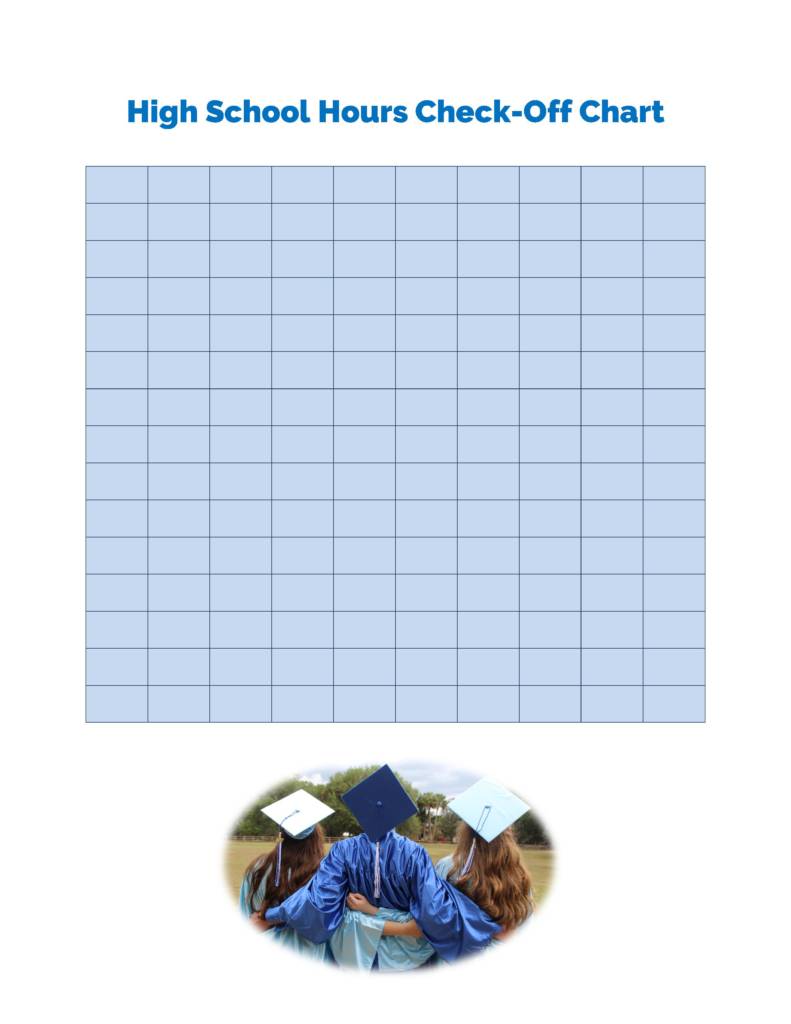How many credits does your teenager need to graduate from high school?
And what exactly is a credit anyway?
These are the questions that begin to emerge as your child enters eighth grade.
Relax! It’s not as confusing as it all sounds. Teaching high school at home is not only possible, but can be fun!
High School Credits vs. College Credits
Let’s talk about college credits first.
A high school credit is different from a college credit.
A college credit is usually based on the number of hours per week a student spends in class. A 3-credit class usually means three classroom hours per week (MWF 8 a.m. – 9 a.m., TR 9:30 a.m.-11 a.m., or W 7 p.m.-10 p.m.) There are, of course, many hours of homework that take place outside of classroom time.
In contrast, a high school credit is equal to 150 hours of classroom time. Realize that for homeschooling families, classroom time is any time they are learning something for a particular class.
Understanding the amount of time that should be invested by your student in a one credit or 1/2 credit class, makes it easy to design your own high school classes (we’ll talk about that in a future article!)

Dual-Enroll Credits
One reason to understand the difference between high school and college credits is that should your child choose to dual-enroll at a local community college, their 3 credit college course will usually give you 1/2 or 1 credit toward high school graduation. The college will give you that information on a class by class basis. I just want to protect you from confusion when your son takes a 3 credit class to get 1 credit on his high school transcript.

What Does A Credit Mean?
Now, keep in mind that in a high school
classroom setting, there is not 150 hours of uninterrupted
learning time making up that credit hour. There is talking, shuffling
of papers, trips to the bathroom, and time wasted while a
teacher brings order to the classroom. But, then again, high school
students do lots of homework outside of school. Well, SOME high school
students do lots of homework outside of school. So, 150 hours is pretty
reasonable for a one credit course.
A one credit class ends up taking between 4 and 5 hours a
week to complete the necessary schoolwork.
If it is a 1/2 credit class, then that would be between 2 and 2 1/2 hours a week OR 4-5 hours/week for 1/2 of the year.
Of course, the hours can pile up any way you and your teen decide upon. If you wanted to, you could work only on one class, finish that one class, and then move on to the next. I don’t recommend that because it could get boring and it would make Algebra and Geometry especially tedious. But this does show you how you could tackle an entire class in 3 weeks with just little over 40 hours of schoolwork per week.
Research for two weeks followed by a week vacation could be a high school credit class (Oops…we’re talking about designing high school classes later!).
EZ Credit Chart

You can make a simple chart to keep track of class learning hours. Simply insert a table with 10 columns and 15 rows. Your daughter simply puts an X or check in a box after the completion of an hour of work for the class she is taking. There, your record keeping is taken care of by your teenager. All you have to do is total up the hours to see if it is a 1 credit or 1/2 credit course.
Your State Credit’s Requirement
Our state, Florida, requires 24 credit hours for public high school graduation, including 4 in English, 4 in Mathematics, 3 in Science (2 of these courses must have labs), and 3 in Social Studies. Colleges, though, like to see 4 credits in each of these core subjects and electives in those areas appeal to them too!
You can look up your state’s graduation requirements here.
I like to use my state’s requirements as a guidelines. I have my own graduation requirements and my children end up graduating with more credits than the state requires.

Homeschooling High School To The Glory of God
When I think of what courses my teens will take, I realize that my husband and I are accountable to God. Don’t leave Him out of your decision making process in choosing what time you will give to what subject. I highly recommend Bible classes, character studies, life skills courses, and relationship training in high school. All of these can receive credits for the work involved. In my next article, I will talk about how to design your own high school classes very soon. For right now, simply map out your credit strategy and keep track of those hours.
How-To-Homeschool-High School Resource

We have a how-to-homeschool high school resource for you! Unlocking the Mystery of Homeschooling High School by Meredith Curtis and Laura Nolette will help you confidently homeschool your teenager. Unlocking the Mystery of Homeschooling High School is available at Amazon. The E-book is available at PayHip, TeachersPayTeachers, and right here on this site! Learn how to educate for real life, create your own classes, make your own transcripts, prepare for SATs, apply to college, get ready for college, and celebrate graduation.
Until next time, Happy Homeschooling!
Meredith Curtis

1 Comment